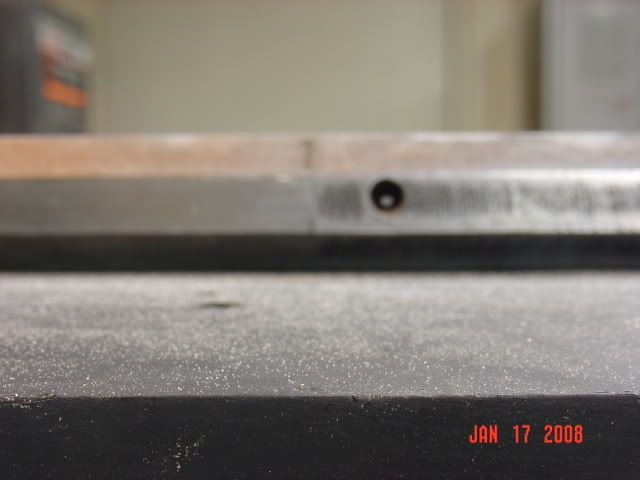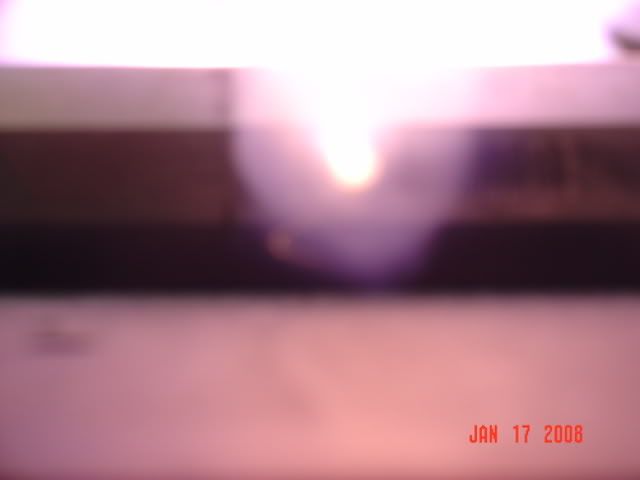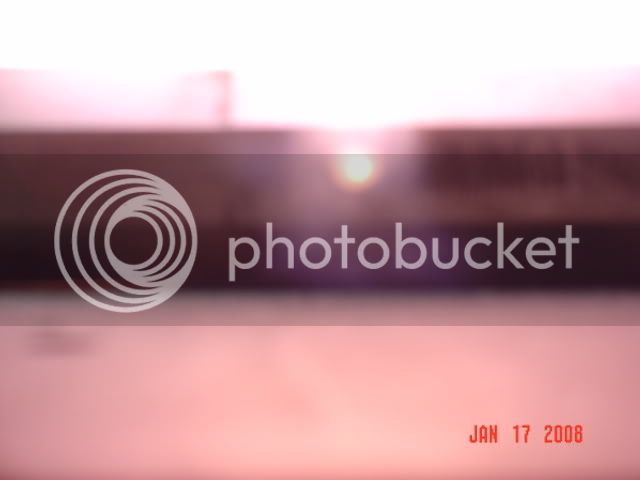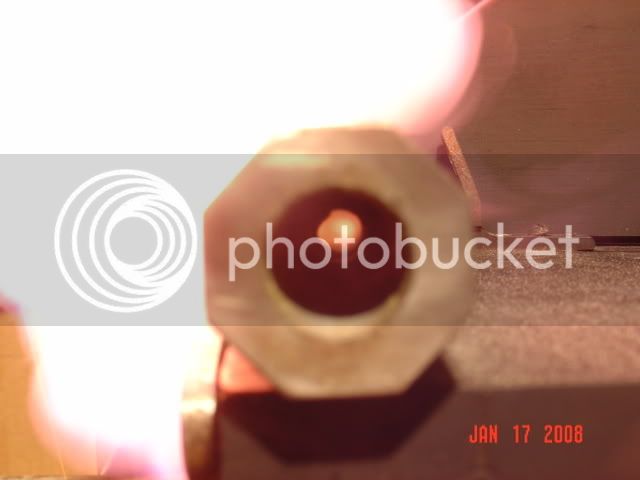Larry Pletcher
50 Cal.
- Joined
- Jul 27, 2006
- Messages
- 1,313
- Reaction score
- 67
This evening I tried to answer some of the questions that came up yesterday. I removed the cleanout screw that is directly opposite the vent and took a couple of shots aimed through the cleanout. On the final shot I set the camera up to look into the muzzle of the barrel stub to watch gases coming through the vent.
This first shot was taken to show how the setup worked. You are looking through the 1/4" cleanout at the vent hole on the opposite flat.

The camera was focused as close as possible at the cleanout. The pan was primed with 1.5 gr Swiss NullB. In both shots the camera was set to open 2 seconds. The shutter was opened and the pan ignited with a red hot wire.
In the first ignition shot, the priming powder was placed in the half of the pan closest to the vent without covering the hole. Note the amount of burning gases coming through the cleanout.

In the second shot the priming powder was placed in the half of the pan farthest from the vent. Again, note the amount of burning gases exiting the cleanout.

In the final shot the camera was aimed at the muzzle. The pan was primed in the closest half of the pan and camera and hot wire were used as in the first two shots.

The whole pan side is whited out by the pan ignition. Remember this was only 1.5 gr. From this muzzle view, you can clearly see the burning gases that enter the vent. Also I believe that there is a "V" of gas faintly seen exiting the cleanout.
I was going to speculate here, but I won't. Please draw your own conclusions.
Regards,
Pletch
This first shot was taken to show how the setup worked. You are looking through the 1/4" cleanout at the vent hole on the opposite flat.

The camera was focused as close as possible at the cleanout. The pan was primed with 1.5 gr Swiss NullB. In both shots the camera was set to open 2 seconds. The shutter was opened and the pan ignited with a red hot wire.
In the first ignition shot, the priming powder was placed in the half of the pan closest to the vent without covering the hole. Note the amount of burning gases coming through the cleanout.

In the second shot the priming powder was placed in the half of the pan farthest from the vent. Again, note the amount of burning gases exiting the cleanout.

In the final shot the camera was aimed at the muzzle. The pan was primed in the closest half of the pan and camera and hot wire were used as in the first two shots.

The whole pan side is whited out by the pan ignition. Remember this was only 1.5 gr. From this muzzle view, you can clearly see the burning gases that enter the vent. Also I believe that there is a "V" of gas faintly seen exiting the cleanout.
I was going to speculate here, but I won't. Please draw your own conclusions.
Regards,
Pletch





